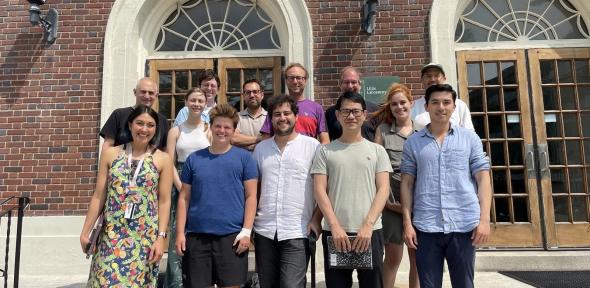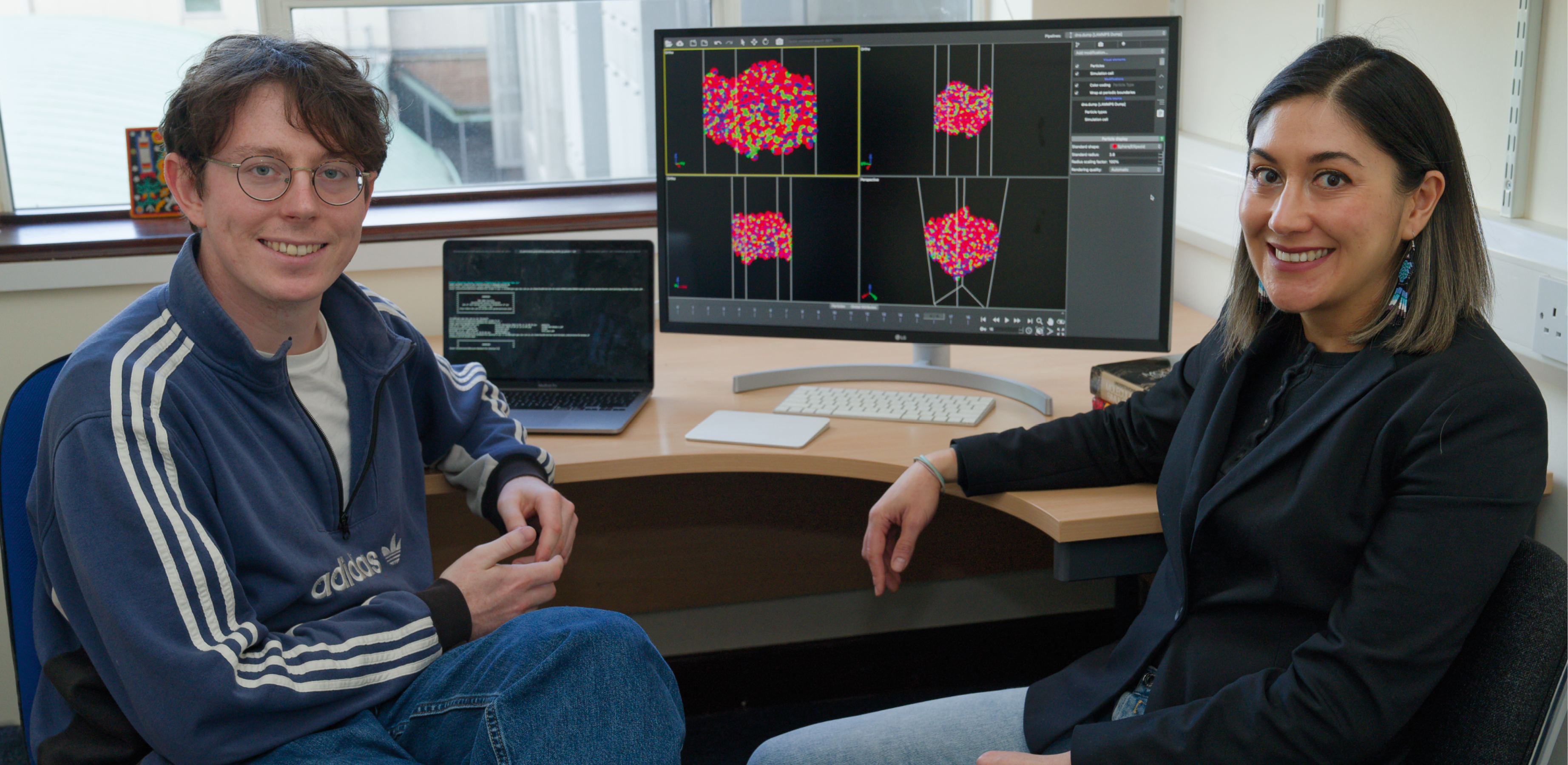
Chromatin Consortium courtesy of the Marine Biological Laboratory at the University of Chicago.
Members of the Collepardo lab took part in a month-long ’Chromatin Consortium’ to help unfold the mysteries of the material that makes up our chromosomes.
Organising DNA
Chromatin is the structure inside our cell nuclei that organises DNA like knitting organises wool into a scarf. If a strand of DNA from a single cell were uncoiled into a straight line then the length would be two metres long. That is taller than most adults, yet the cell nucleus is only a few microns in diameter.
The intricate three-dimensional organisation of chromatin ensures that only specific parts of the DNA strand, ie specific genes, are expressed as required. For example, chromatin ensures that liver cells grow in the liver and brain cells grow in the brain.
There are still many mysteries around how chromatin is organised inside cells. The Chromatin Consortium was designed to advance the understanding of chromatin organisation and behaviour.
Chromatin Consortium
The consortium brought together the research groups of Professor Mike Rosen and Professor Sy Redding from the USA, Professor Daniel Gerlich from Austria and Professor Collepardo from Cambridge to the Marine Biological Laboratory in Woods Hole, Massachusetts. The aim was to develop ideas, implement experiments and see results on a super-fast time scale. The groups were made up of biochemists, cell biologists, engineers, genomicists, theoretical chemists and physicists.

Kieran Russell (left) and Rosana Collepardo taken by Michael Webb ©University of Cambridge
“The work we are doing is truly multidisciplinary, so being together at MBL has helped enormously in just finding the language we need to communicate, to understand how we are each are looking at the problem,” says Rosana Collepardo-Guevara, who divides her time as a Professor of Computational and Molecular Biophysics between this department and the Department of Genetics.
“It was a bit different to most collaborations,” comments Julia Maristany, a third year PhD student in the Collepardo lab. “We had the same focus but in different fields: to see if experts on in vitro, in vivo and in silico could tackle a single biological question with different techniques. These were ambitious experiments: we brainstormed everything we could think of and took the most viable ones further. We’ll be back next year!”
Thanks to the dedicated preparation beforehand, and diverse expertise, Rosana says the consortium members began half a dozen new research projects.
“We aim to establish a concerted effort across multiple laboratories and disciplines to advance the understanding of chromatin organisation via liquid-liquid phase separation.”
Liquid–liquid phase separation looks at how two different liquids can remain distinct instead of forming a soup, like oil droplets suspended on water. Transformative experiments in the past decade have shown that chromatin and its associated biomolecules can undergo liquid–liquid phase separation in vitro and in cells, forming liquid drops of differing chemical compositions–termed biomolecular condensates. Segregating different DNA regions, i.e. different genes, inside different biomolecular condensates is hypothesised to contribute to the tight regulation of gene function in the nucleus.
Continuing at Cambridge
Now that the groups are all back at their home institutions, the Collepardo group is using computer simulations to explore chromatin structure, and how it relates to gene regulation. They do this by developing powerful multiscale computational methods that can increase the resolution of experiments to near-atomistic levels, while at the same time revealing the physicochemical mechanisms that explain the experimental observations.
These computer models need experimental data to complement their findings, which is where the work from the consortium comes in.
The Collepardo lab’s computational models uncover the molecular mechanisms explaining laboratory experiments and help design new experiments and, in return, the results of the experiments help the theoreticians refine their models and build new ones.
Julia adds: “Working in the same room was so important because we could talk in real time about the assumptions that we are making and bridge gaps in our understanding. We worked very well in the room together with everyone there for kick starting ideas.
“We’re hoping to get some of the results out by the next consortium so that when we meet again the group can start on new ideas.”
These in-depth studies of chromatins should advance the understanding of them across many fields and accelerate their role in medicinal research.
This article first appeared in Chem@Cam magazine Winter 2023 Issue 67 pg 24.
